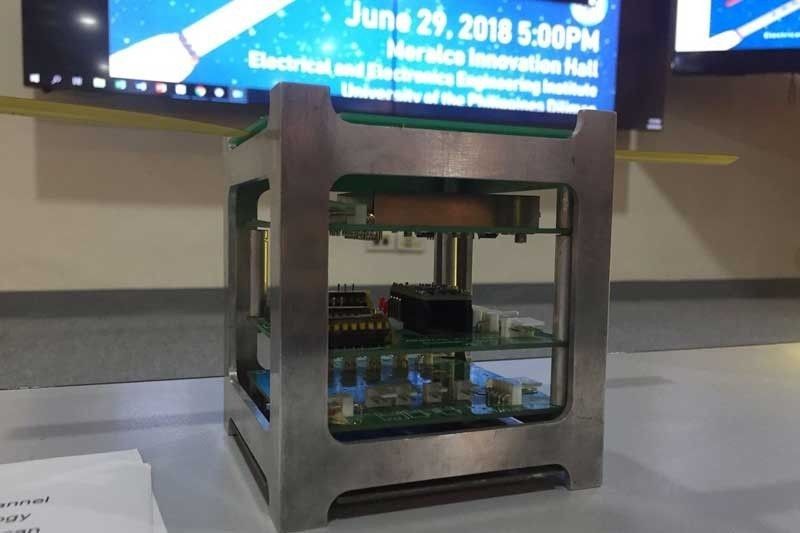Diwata-2 microsatellite launched into orbit

MANILA, Philippines — Diwata-2, the second microsatellite designed and constructed by a team of Filipino engineers, was successfully launched into orbit yesterday afternoon.
Engineer Marc Caesar Talampas, program leader of the Department of Science and Technology (DOST) Development of Philippine Scientific Earth Observation Microsatellite program, said the launch was done via Japan’s H-IIA F40 rocket from the Tanegashima Space Center at 12:08 p.m. in Japan.
The Diwata-2 microsatellite was separated from the rocket some 621 kilometers from Earth and started its orbit.
The DOST said Diwata-2 boasts of added features from the previous Diwata launched into orbit in April 2016, with a deployable solar panel, enhanced resolution cameras, a sun-synchronous orbit that will allow a fixed revisit interval and a larger area of coverage, an amateur ham radio unit for emergency satellite radio communications, an experimental altitude determination module and an omnidirectional sun-aspect sensor.
Like Diwata-1, it also carries a wide field camera, a middle field camera, a high precision telescope and a space-borne multispectral imager, with liquid crystal tunable fulter.
All the mission instruments have undergone rigorous ground calibration and testing by Filipino engineers and scientists who designed them at Tohoku University and Hokkaido University to ensure that they will perform optimally at the new orbital conditions of Diwata-2.
Both Diwata-1 and Diwata-2 are Earth-observing microsatellites capable of capturing images from Earth for environmental assessment.
The satellite control, operation and acquisition of experimental data will be done at the Philippine Earth Data Resource Observation Center ground station at the DOST-Advanced Science and Technology Institute in Diliman, Quezon City.
- Latest
- Trending



























